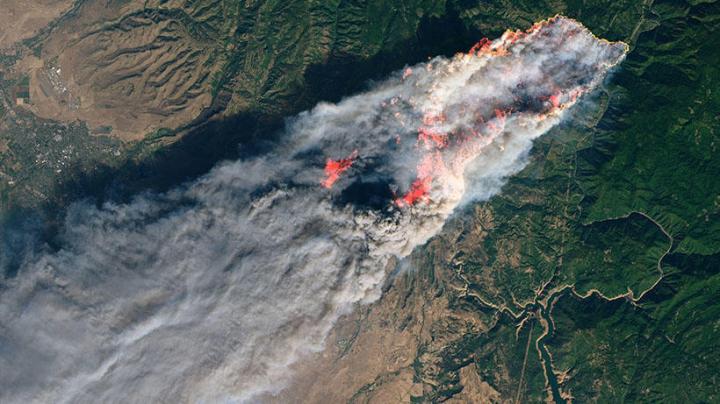
Credit: NASA Earth Observatory image by Joshua Stevens.
CAMBRIDGE, Mass., January 31– The Harvard Museum of Natural History announces the new Climate Change exhibit that draws on the latest scientific information about our warming climate, the global and local consequences, and how to both reduce the fossil fuel emissions that cause it and prepare for its effects.
This multimedia exhibit includes engaging video and storm simulations, a “check your knowledge” interactive station, and a dramatic inside look at a high-tech Argo float from the Woods Hole Oceanographic Institution-one of more than 4,000 deployed worldwide to monitor global oceans and climate.
Developed in collaboration with the Harvard University Center for the Environment and informed by new Harvard research, the exhibit offers visitors the hard facts¬¬–the knowns and unknowns–about one of the greatest challenges the world faces.
“Climate change is one of the most complicated and challenging problems the world has ever faced” said Professor Dan Schrag, Director of the Harvard Center for the Environment and lead curator of the exhibit. “It is a global problem, and one that requires global action to manage the impacts and minimize the risks. Here at Harvard, we have many researchers who contribute to understanding climate change and working towards solutions. This exhibit is a manifestation of that knowledge, and through our partnership with HMNH, we are able to present some of that to the broader community.” For more perspectives on climate change across economics, public policy, the arts, and more see the videos at https:/
Harvard Museums of Science & Culture Executive Director Jane Pickering said the museums aim to provide a meeting point for scholars and the public. “The Harvard Museum of Natural History has had an exhibit on climate change since 2004,” said Pickering, “but we felt it was imperative at this time to rethink our display. We wanted to connect visitors to the cutting-edge research going on at the university as they consider their own responses to this unprecedented global challenge.”
###
Climate Change is an ongoing exhibit. This new exhibit was made possible with generous financial support from Clark Bernard MBA ’68 and Susana Bernard, together with Jonathan Goldstein MBA ’90, and Kaia, Annika and Skylar Goldstein in honor of Professor James J. McCarthy and Sue McCarthy
Image caption:
Satellite Image of California’s Camp Fire
Extreme drought and record heat have laid the groundwork for hugely destructive and deadly wildfires, including the now infamous “Camp Fire,” seen here a few hours after it ignited on November 8, 2018. NASA Earth Observatory image by Joshua Stevens.
About the Harvard Museum of Natural History
With a mission to enhance public understanding and appreciation of the natural world and the human place in it, the Harvard Museum of Natural History draws on the University’s collections and research to present a historic and interdisciplinary exploration of science and nature. More than 250,000 visitors annually make it the University’s most-visited museum.
The Harvard Museum of Natural History is located at 26 Oxford Street, an 8-minute walk through historic Harvard Yard from the Harvard Square T station. For general information on exhibits, public events, parking, and times for free visitation for Massachusetts residents, visit the website at http://www.
The Harvard Museum of Natural History is one of the four Harvard Museums of Science & Culture.
Media contact:
Bethany Carland-Adams
Public Relations Specialist
HARVARD MUSEUMS OF SCIENCE & CULTURE
26 Oxford Street, Cambridge, MA 02138
617 496 6064 office
[email protected]
hmsc.harvard.edu
High resolution images are available on request.
Media Contact
Bethany Carland-Adams
[email protected]
617-496-6064
Original Source
https:/




